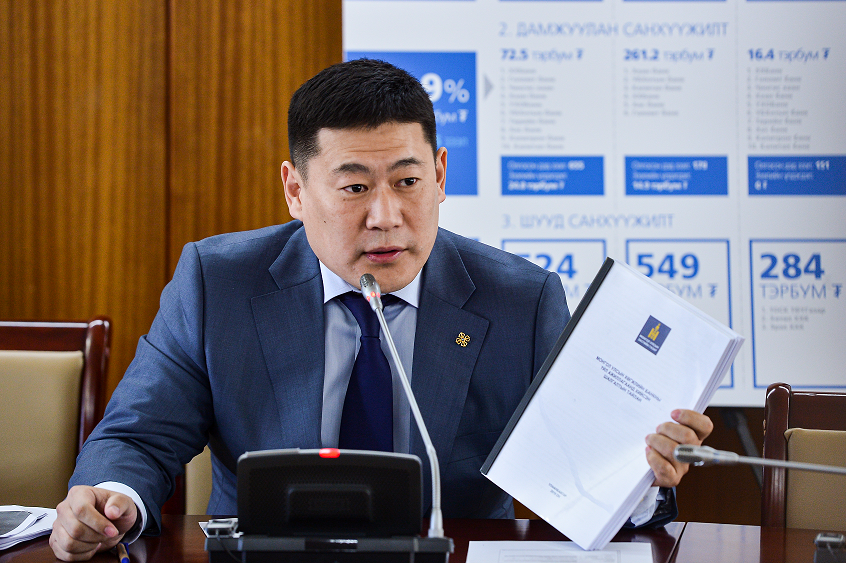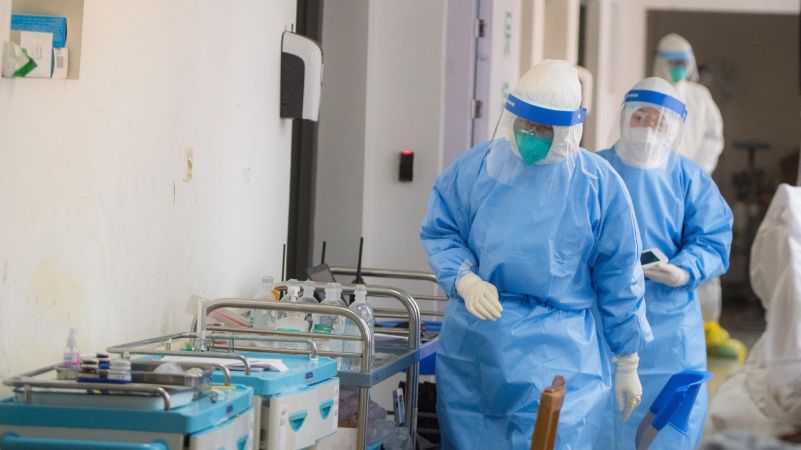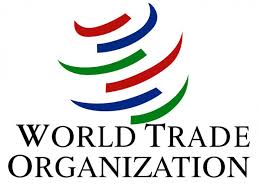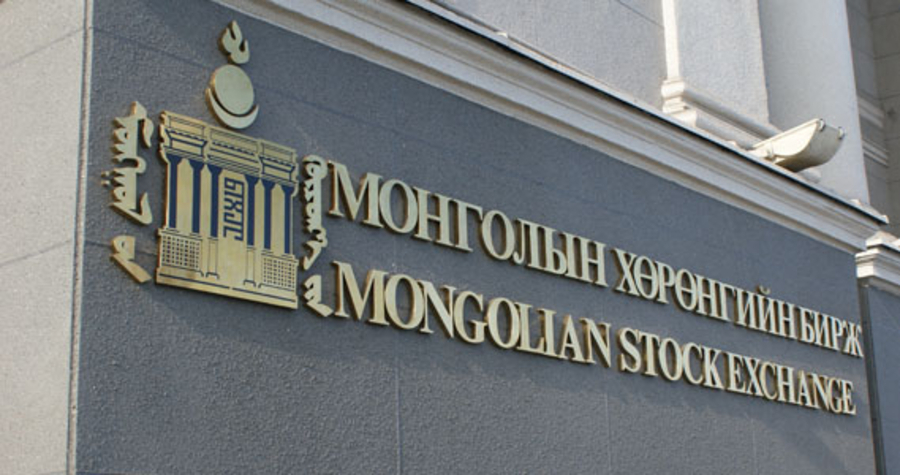Events
| Name | organizer | Where |
|---|---|---|
| MBCC “Doing Business with Mongolia seminar and Christmas Receptiom” Dec 10. 2025 London UK | MBCCI | London UK Goodman LLC |
NEWS

Xiaomi to invest $10bn in electric vehicle race www.bbc.com
Chinese phone maker Xiaomi is wading into electric vehicles with a $10bn (£7.3bn) investment over ten years.
The Chinese tech giant's goal is to "offer quality smart electric vehicles," it said on Tuesday.
Xiaomi is the world's third largest smartphone maker behind Apple and Samsung, according to data firm Canalys.
The company will be entering a fiercely competitive electric car market that also includes rivals Apple and Huawei.
Xiaomi will set up a wholly-owned subsidiary with an initial investment of about $1.5bn, with the company's chief executive Lei Jun heading up the new venture.
"The decision was made after numerous rounds of deliberation among all our partners, and this will be the final major entrepreneurial project of my life," he said in a statement.
So far, the company has given no indication about whether it will produce budget models or target the top end of the market.
There are already hundreds of companies in China jostling for a share of the world's leading market for electric cars.
Planned or existing models in China range from the tiny Hong Guang Mini EV, which retails for $4,500 to the new high-end electric brand Zeekr, which is owned by China's biggest carmaker Geely.
Foreign manufacturers are also looking to build EVs for Chinese consumers.
Tesla is already delivering its Model Y to China from its Shanghai factory, while Ford has plans to manufacture the electric version of its Mustang there.
Partnering up
Other Chinese technology companies have also signalled their intention to make cars, or to partner with existing carmakers to produce new driving technologies.
Search engine giant Baidu announced in January it would also launch an electric car business.
China's e-commerce giant Alibaba has formed an EV joint venture with SAIC, while ride-hailing app Didi Chuxing has partnered with automaker BYD to make electric vehicles specifically designed for its services.
Data provider S&P Global Platts estimates that "new energy vehicles" will account for 20% of total new car sales in China by 2025.

Steppe Gold reports strong operational and financial results in Mongolia www.kitco.com
Steppe Gold (TSX: STGO) today announced that the company’s revenue for the year ended December 31, 2020 was $52 million on sales of 31,733 gold ounces and 13,710 silver ounces with average realized prices per ounce of $1,822 and $20, respectively.
The company’s operating income from mine operations, before depreciation and depletion, was $33 million and consolidated group adjusted EBITDA for the year was $24 million. Year-end cash, restricted cash and savings accounts balance was $33 million.
During the year ended December 31, 2020, 1,138,209 tonnes of ore were mined and 699,204 tonnes of ore stacked with an average gold grade of 2.03 g/t and an average silver grade of 8.88 g/t.
Steppe Gold noted that it is very pleased with a strong start to production at the ATO gold mine in Mongolia, with operating cash flow from mine operations in 2020 of $33 million, on revenue of $52 million, in an approximate 9 months of production.
President and CEO Bataa Tumur-Ochir added, "We have now mined approximately 1.7m tonnes of ore and 1.25m tonnes stacked on the leach pad. With a new fixed crusher in place this summer, we are planning a record year for stacking in 2021. With the ATO resource now at 2.45m oz Au Eq, and procurement of long lead capital items underway, we are focused on increasing our production run rate from the oxide phase through 2021 and 2022 and executing the Phase 2 expansion which has already begun."
Steppe Gold is targeting annual production in 2021 and 2022 of between 50,000 to 60,000 oz and then a transition to the fresh rock ores in 2023. Production forecasts for 2021 are dependent on a restart of leaching in April 2021 and no further delays on procurement due to COVID-19.
By Vladimir Basov

Auckland's Cornwall Park cows to be live exported to Mongolia, causing outrage www.stuff.co.nz
Some of the cows from Auckland's Cornwall Park are to be exported to Mongolia to participate in a breeding programme.
The announcement has outraged animal welfare organisations and members of the public, who say live export is “inhumane”.
In a text message to a member of the public, the Cornwall Park Trust confirmed it does “occasionally export cows”.
“Cornwall park is proud that our cows have been selected to help establish a breeding programme for Mongolian farmers,” the message read.
“This programme will help these remote villagers become more self-sufficient and improve the villagers' standard of living.”
The cattle are very valuable and are treated as such, the message read.
“This includes full veterinary care throughout the voyage for a small amount that make the journey.”
SAFE chief executive Debra Ashton said Aucklanders would be shocked to learn their beloved park was being used to raise animals for the controversial live export trade.
The park was gifted to the city in 1901 by Sir John Logan Campbell.
Cornwall Park has been farming Simmental cattle for more than 20 years.
Ashton said the cows will face a “long, rough journey in cramped, disgusting conditions” before arriving in a country with high elevations and cold, dry conditions.
“Those gentle cows that Aucklanders will be familiar with, will eventually be slaughtered in their destination country, potentially by means too cruel to be legal in Aotearoa,” she said.
“Cows are at risk at sea, and they’re at risk in their destination country. The animal welfare laws and regulations we have in New Zealand don’t exist in the countries we export animals to.”
Ashton called on the trust to reconsider its decision and stop any future plans to sell more animals to live exporters.
The Japanese Coast Guard has called off its full-time search for Gulf Livestock 1, the live export ship that went missing in a typhoon in the East China Sea.
Following the trust’s Facebook announcement about the export, many members of the public have expressed sadness, with one saying the cows are on a “one-way trip to hell”.
The cows will suffer a “rough, disgusting, perhaps deadly journey”, and an extreme climate in Mongolia, another said.
The Ministry for Primary Industries has been reviewing the controversial live export trade for the past two years.
During that time, the live export ship Gulf Livestock 1 capsized and sank off the coast of China.
stuff-logoauckland push alret updates icon
The incident saw 5867 New Zealand cows drown and 41 crew members, including two New Zealanders, lost at sea.
Ministry figures show 109,921 cattle were live exported to China in 2020, with 128 mortalities.
According to the Simmental Cattle Breeders Society, Cornwall Park has been breeding and keeping Simmental cattle for more than 20 years.
They have a quiet temperament and adapt well to the hustle and bustle of city life, a post on the society’s website said.
A Simmental bull and steers are pictured on a foggy morning at Cornwall Park.
NICOLE LAWTON/STUFF
A Simmental bull and steers are pictured on a foggy morning at Cornwall Park.
According to the Cornwall Park website, there are about 60 cows at the park, but the numbers at least double during calving season from July to September.
The Simmental cattle are known for their “sturdy nature, excellent beef and ability to cope with changes in climate”, the website said.
“Our cattle are either sold to be breeders or for meat, while some stay with us to replace our mother cows – we pick the cream of the crop ... and year-on-year they help us to improve our herd.”
More than four million visitors are estimated to come to Cornwall Park every year.

Mongolia, Russia: Magnitude-5.2 earthquake occurs at Mongolia-Russia border region at around 08:01 ULAT March 31 www.garda.com
A magnitude-5.2 earthquake occurred in the Mongolia-Russia border region at around 08:01 ULAT March 31. The epicenter was about 42 km (26 miles) south southwest of Turt, Mongolia. The tremor occurred at a depth of about 10 km (6 miles), and weak-to-light shaking was probably felt throughout the border regions, including Khovsgol in Mongolia and eastern parts of Tuva Republic, western parts of Buryatia, and far southern parts of Irkutsk Oblast . There have been no initial reports of damage or casualties as a result of the earthquake; significant damage is unlikely. It could take several hours until authorities can conduct comprehensive damage assessments, especially in remote areas. Aftershocks are possible over the coming days.
Officials may temporarily shut down transportation infrastructure in the tremor zone to check for damage. Minor disruptions could occur during shutdowns, but service will likely resume quickly if no damage is found. Utility outages are possible, particularly near the earthquake's epicenter.
Advice
Plan accordingly for aftershocks. Consider vacating multistory buildings if operating in affected areas until authorities confirm their structural integrity. Allow additional time for air and road travel, as aftershocks may prompt brief disruptions. Seek updated information on road conditions before driving in hilly areas in the affected region due to potential landslides.

PM: Effective lockdown could help vaccinate 1 million population in Mongolia within April www.montsame.mn
On March 30, Prime Minister of Mongolia L.Oyun-Erdene worked at the National Cancer Center and National Center for Communicable Diseases.
The Prime Minister become acquainted with the ongoing vaccination of Pfizer-BioNTech vaccine against COVID-19 at the National Cancer Center. The 25,740 doses of Pfizer-BioNTech vaccine, which Mongolia received under the COVAX Facility, is being administered to organ transplant recipients, patients with chronic diseases, people with HIV and cancer patients.
At the National Center for Communicable Diseases, L.Battur, General Director of the country’s main health organization responding to COVID-19, introduced about the current state of the COVID-19 transmission and if strict lockdown measures are not imposed, in all likelihood, the coronavirus infection rates will rise by 10 times at minimum by mid June compared to the current level.
As the cabinet is expected to decide on March 31 whether to put in place another lockdown to curb the COVID-19 infections in the country from April 3 to April 18, PM Oyun-Erdene highlighted that the government has been adhering to principle of supporting the economy while avoiding any strict quarantine measures. “However, we must listen to our experts and scientists. If lockdown is placed, we must intensify the vaccination drive to vaccinate one million adult populations within April to make the lockdown effective.
The PM also informed that the government will provide a total of MNT 2.8 billion as incentive pay to 2,230 healthcare workers and 1,100 resident doctors, who have been working on the frontline to combat COVID-19 pandemic.
As of March 30, a total of 300,366 people in Mongolia or 15.2 percent of the target number of the total population have received the first dose of COVID-19 vaccines available in Mongolia, including Sputnik-V, Sinopharm, AstraZeneca and Pfizer-BioNTech. The administration of the second doses will begin from April 10, reports the Health Ministry.

Mongolia reports 377 new cases of COVID-19, two coronavirus-related deaths www.montsame.mn
At the regular press briefing of the Ministry of Health today on March 31, it was reported that 377 new cases were detected in Mongolia.
Specifically, there were 328 new cases detected in the capital and the rest were recorded in the provinces.
As of today, the total number of COVID-19 confirmed cases in Mongolia stands at 8447, of which 7000 cases were recorded in Ulaanbaatar and 910 in provinces.
In the past 24 hours, 95 people have been discharged from the hospital, bringing the total number of recoveries to 4,920. Today 1,902 patients are receiving treatment at hospitals of the capital city and provinces. Of the patients, 1,637 are in mild, 219 are in serious, 34 are in critical and 12 are in very critical health condition.
Also, the Head of the Surveillance Department of NCCD J. Baigalmaa said that two patients aged 69 and 84, who were receiving treatment died due to COVID-19 complications, which brings the total number of coronavirus-related deaths in the country to 12.

Mongolia to receive additional financing from ADB for child allowances www.news.mn
The Asian Development Bank (ADB) has approved a USD 73 million loan to improve social welfare support for the poor and vulnerable, especially women and children, to mitigate the socioeconomic impacts of the coronavirus pandemic in Mongolia.
The project will specifically expand the child money programme, which provides universal cash grants to all children aged 0–17. The ADB will finance a share of the extended shock-responsive increase in the monthly child grant benefits until June 2021. This follows on from the earlier top-ups supported under an emergency assistance loan from April to September 2020. The total project cost is $259.64 million, which includes government financing of $186.64. It is expected to be completed in 2023.
However, the Mongolian Government has already approved MNT 864 billion for monthly childallowances in the 2021 State Budget.
As early as May 2020, nearly three-quarters of all Mongolian households and 85% of poor households reported experiencing some sort of economic shock. Nearly two-thirds (64%) of all households reported an increase in food prices, while nearly three-quarters (73%) of self-employed workers experienced income loss. About 70% of farmers and herder households reported a decline in income compared with the previous year.

Mongolia's Dust Storm Spreads to China, Japan and South Korea www.weather.com
Beijing saw its second duststorm in less than two weeks on Sunday, and the dust kept skies hazy in Shanghai on Monday and Tuesday as well.
The dust storm made the sun appear blue in Beijing on Sunday, as visibility was near zero and air pollution levels were measured at 500, which is the maximum level in China.
The dust also made its way to western and northeastern Japan and parts South Korea, and may continue into Wednesday, Japan Today reported.
The China Meteorological Administration issued a yellow alert on Friday ahead of the storm, which spread from Mongolia into northern Chinese provinces including Inner Mongolia, Shanxi, Liaoning and Hebei. The administration also advised citizens to stay home if possible.
The dust storm forced flight delays and cancellations in northern China, and in Inner Mongolia, about 60% of flights were canceled at Chifeng Airport and 50% were canceled at Baotou Airport on Sunday, according to the South China Morning Post.
The China Meteorological Administration said that a relatively warm spring and reduced rain in Mongolia are contributing to the recent dust storms. Click through the slideshow above to see how the dust storms are affecting several countries across Asia.
The Weather Company’s primary journalistic mission is to report on breaking weather news, the environment and the importance of science to our lives. This story does not necessarily represent the position of our parent company, IBM.

WTO: Impact of COVID-19 severely hitting Mongolian economy hard www.news.mn
Mongolia’s trade policies and practices have been reviewed by the World Trade Organisation (WTO) between March 17 and 19.
The chairman of the meeting, Ambassador Herald Aspelund, noted in his concluding remarks, ” The impact of COVID-19 has severely affected the Mongolian economy, albeit with Government intervention, mainly in the form of stimulus packages, it was hoped that the economy would recover quickly and accelerate.”
“Despite these positive trends, Mongolia’s economy remained heavily reliant on a few sectors and its trade was concentrated in terms of products and markets, thus the Members felt that there was a strong need to diversify. This issue was recognised by the Government as one of its top national policy priorities, as addressed in Mongolia’s Economic Recovery Programme and the Mongolian Export Programme, among others. Merchandise exports and imports reached a record high of USD 13.7 billion in 2019 and the trade balance remained positive for many years, but several Members noted that Mongolia had yet to reach its trade potential.”
Many members applauded Mongolia’s contributions to the Multilateral Trading System including through its coordinating role of the Asian Group of Developing Countries and its contribution the group of Landlocked Developing Countries. Mongolia’s ratification of the Trade Facilitation Agreement, its support of the Buenos Aires Declaration on Women’s Economic Empowerment, and its participation in various Joint Statement Initiatives were viewed as particularly welcome developments during the period.
Mongolia’s positive developments in the area of trade facilitation were recognised as it had undertaken significant efforts to improve trade facilitation and modernise its customs procedures. This was particularly important given Mongolia’s geographical location as a landlocked country and as an important transit corridor along the old Silk Road. The adoption of the National Trade Facilitation Roadmap, the establishment of the National Trade Facilitation Committee, the development of the single window application, and creation of electronic data exchange were all important steps taken to make improvements in this area.
Nevertheless, some Members noted that they still faced difficulties with Mongolia’s customs clearance and inspection procedures. In their interventions, Members referred to remaining challenges in a number of areas. Mongolia’s SPS regime was characterised as lacking alignment with international SPS standards and Mongolia was encouraged to make improvements in this area. Import quotas on certain agricultural products were seen as problematic on several fronts, including what some Members saw as possible inconsistency with WTO obligations.
The importance of strengthening good governance, improving transparency and the legal environment were also recurrent themes during discussions. Transparency was identified by several Members as needing improvement on a number of fronts, including in the areas of government procurement, investment laws and regulations, regulatory and legislative processes, and permits and licensing processes for imported goods. Securing an independent judiciary and upholding the rule of law were identified as key elements in enhancing governance. (WTO)

Erdenes Tavantolgoi JSC’s bonds trading launched www.montsame.mn
‘Erdenes Tavantolgoi’ JSC is offering bonds worth MNT600 billion to the public. The Financial Regulatory Committee registered the ETT’s bonds in the securities registry. Today, March 30, trading orders of the bonds have begun at the Mongolian Stock Exchange. In particular, bonds worth MNT600 billion have been issued in currencies of Mongolian tugriks (MNT) and US dollar (USD) with the maturity of 24-36 months, par value of MNT100,000 and USD100.
A ceremony to launch the trading of dual currency bonds was attended by Deputy Minister of Mining and Heavy Industry O. Batnairamdal, head of the Financial Regulatory Committee D. Bayarsaikhan, Executive Director of Mongolian Stock Exchange O. Altai and CEO of Erdenes Tavantolgoi JSC B. Gankhuyag.
At the ceremony, CEO B. Gankhuyag said that the implementation of major projects such as the construction of strategically important railways Tavan Tolgoi-Gashuunsukhait, Tavan Tolgoi-Zuunbayan, and 450MB power and thermal power plants will be financed with bonds.
Erdenes Tavantolgoi JSC offers debt instruments to the public in three phases to raise up to MNT 2 trillion. It is expected to fund the major infrastructure projects such as railway, power plant, coal processing plant which the Government plans to implement in 2020-2024, with the money raised in the domestic capital market.
- «
- 1
- 2
- 3
- 4
- 5
- 6
- 7
- 8
- 9
- 10
- 11
- 12
- 13
- 14
- 15
- 16
- 17
- 18
- 19
- 20
- 21
- 22
- 23
- 24
- 25
- 26
- 27
- 28
- 29
- 30
- 31
- 32
- 33
- 34
- 35
- 36
- 37
- 38
- 39
- 40
- 41
- 42
- 43
- 44
- 45
- 46
- 47
- 48
- 49
- 50
- 51
- 52
- 53
- 54
- 55
- 56
- 57
- 58
- 59
- 60
- 61
- 62
- 63
- 64
- 65
- 66
- 67
- 68
- 69
- 70
- 71
- 72
- 73
- 74
- 75
- 76
- 77
- 78
- 79
- 80
- 81
- 82
- 83
- 84
- 85
- 86
- 87
- 88
- 89
- 90
- 91
- 92
- 93
- 94
- 95
- 96
- 97
- 98
- 99
- 100
- 101
- 102
- 103
- 104
- 105
- 106
- 107
- 108
- 109
- 110
- 111
- 112
- 113
- 114
- 115
- 116
- 117
- 118
- 119
- 120
- 121
- 122
- 123
- 124
- 125
- 126
- 127
- 128
- 129
- 130
- 131
- 132
- 133
- 134
- 135
- 136
- 137
- 138
- 139
- 140
- 141
- 142
- 143
- 144
- 145
- 146
- 147
- 148
- 149
- 150
- 151
- 152
- 153
- 154
- 155
- 156
- 157
- 158
- 159
- 160
- 161
- 162
- 163
- 164
- 165
- 166
- 167
- 168
- 169
- 170
- 171
- 172
- 173
- 174
- 175
- 176
- 177
- 178
- 179
- 180
- 181
- 182
- 183
- 184
- 185
- 186
- 187
- 188
- 189
- 190
- 191
- 192
- 193
- 194
- 195
- 196
- 197
- 198
- 199
- 200
- 201
- 202
- 203
- 204
- 205
- 206
- 207
- 208
- 209
- 210
- 211
- 212
- 213
- 214
- 215
- 216
- 217
- 218
- 219
- 220
- 221
- 222
- 223
- 224
- 225
- 226
- 227
- 228
- 229
- 230
- 231
- 232
- 233
- 234
- 235
- 236
- 237
- 238
- 239
- 240
- 241
- 242
- 243
- 244
- 245
- 246
- 247
- 248
- 249
- 250
- 251
- 252
- 253
- 254
- 255
- 256
- 257
- 258
- 259
- 260
- 261
- 262
- 263
- 264
- 265
- 266
- 267
- 268
- 269
- 270
- 271
- 272
- 273
- 274
- 275
- 276
- 277
- 278
- 279
- 280
- 281
- 282
- 283
- 284
- 285
- 286
- 287
- 288
- 289
- 290
- 291
- 292
- 293
- 294
- 295
- 296
- 297
- 298
- 299
- 300
- 301
- 302
- 303
- 304
- 305
- 306
- 307
- 308
- 309
- 310
- 311
- 312
- 313
- 314
- 315
- 316
- 317
- 318
- 319
- 320
- 321
- 322
- 323
- 324
- 325
- 326
- 327
- 328
- 329
- 330
- 331
- 332
- 333
- 334
- 335
- 336
- 337
- 338
- 339
- 340
- 341
- 342
- 343
- 344
- 345
- 346
- 347
- 348
- 349
- 350
- 351
- 352
- 353
- 354
- 355
- 356
- 357
- 358
- 359
- 360
- 361
- 362
- 363
- 364
- 365
- 366
- 367
- 368
- 369
- 370
- 371
- 372
- 373
- 374
- 375
- 376
- 377
- 378
- 379
- 380
- 381
- 382
- 383
- 384
- 385
- 386
- 387
- 388
- 389
- 390
- 391
- 392
- 393
- 394
- 395
- 396
- 397
- 398
- 399
- 400
- 401
- 402
- 403
- 404
- 405
- 406
- 407
- 408
- 409
- 410
- 411
- 412
- 413
- 414
- 415
- 416
- 417
- 418
- 419
- 420
- 421
- 422
- 423
- 424
- 425
- 426
- 427
- 428
- 429
- 430
- 431
- 432
- 433
- 434
- 435
- 436
- 437
- 438
- 439
- 440
- 441
- 442
- 443
- 444
- 445
- 446
- 447
- 448
- 449
- 450
- 451
- 452
- 453
- 454
- 455
- 456
- 457
- 458
- 459
- 460
- 461
- 462
- 463
- 464
- 465
- 466
- 467
- 468
- 469
- 470
- 471
- 472
- 473
- 474
- 475
- 476
- 477
- 478
- 479
- 480
- 481
- 482
- 483
- 484
- 485
- 486
- 487
- 488
- 489
- 490
- 491
- 492
- 493
- 494
- 495
- 496
- 497
- 498
- 499
- 500
- 501
- 502
- 503
- 504
- 505
- 506
- 507
- 508
- 509
- 510
- 511
- 512
- 513
- 514
- 515
- 516
- 517
- 518
- 519
- 520
- 521
- 522
- 523
- 524
- 525
- 526
- 527
- 528
- 529
- 530
- 531
- 532
- 533
- 534
- 535
- 536
- 537
- 538
- 539
- 540
- 541
- 542
- 543
- 544
- 545
- 546
- 547
- 548
- 549
- 550
- 551
- 552
- 553
- 554
- 555
- 556
- 557
- 558
- 559
- 560
- 561
- 562
- 563
- 564
- 565
- 566
- 567
- 568
- 569
- 570
- 571
- 572
- 573
- 574
- 575
- 576
- 577
- 578
- 579
- 580
- 581
- 582
- 583
- 584
- 585
- 586
- 587
- 588
- 589
- 590
- 591
- 592
- 593
- 594
- 595
- 596
- 597
- 598
- 599
- 600
- 601
- 602
- 603
- 604
- 605
- 606
- 607
- 608
- 609
- 610
- 611
- 612
- 613
- 614
- 615
- 616
- 617
- 618
- 619
- 620
- 621
- 622
- 623
- 624
- 625
- 626
- 627
- 628
- 629
- 630
- 631
- 632
- 633
- 634
- 635
- 636
- 637
- 638
- 639
- 640
- 641
- 642
- 643
- 644
- 645
- 646
- 647
- 648
- 649
- 650
- 651
- 652
- 653
- 654
- 655
- 656
- 657
- 658
- 659
- 660
- 661
- 662
- 663
- 664
- 665
- 666
- 667
- 668
- 669
- 670
- 671
- 672
- 673
- 674
- 675
- 676
- 677
- 678
- 679
- 680
- 681
- 682
- 683
- 684
- 685
- 686
- 687
- 688
- 689
- 690
- 691
- 692
- 693
- 694
- 695
- 696
- 697
- 698
- 699
- 700
- 701
- 702
- 703
- 704
- 705
- 706
- 707
- 708
- 709
- 710
- 711
- 712
- 713
- 714
- 715
- 716
- 717
- 718
- 719
- 720
- 721
- 722
- 723
- 724
- 725
- 726
- 727
- 728
- 729
- 730
- 731
- 732
- 733
- 734
- 735
- 736
- 737
- 738
- 739
- 740
- 741
- 742
- 743
- 744
- 745
- 746
- 747
- 748
- 749
- 750
- 751
- 752
- 753
- 754
- 755
- 756
- 757
- 758
- 759
- 760
- 761
- 762
- 763
- 764
- 765
- 766
- 767
- 768
- 769
- 770
- 771
- 772
- 773
- 774
- 775
- 776
- 777
- 778
- 779
- 780
- 781
- 782
- 783
- 784
- 785
- 786
- 787
- 788
- 789
- 790
- 791
- 792
- 793
- 794
- 795
- 796
- 797
- 798
- 799
- 800
- 801
- 802
- 803
- 804
- 805
- 806
- 807
- 808
- 809
- 810
- 811
- 812
- 813
- 814
- 815
- 816
- 817
- 818
- 819
- 820
- 821
- 822
- 823
- 824
- 825
- 826
- 827
- 828
- 829
- 830
- 831
- 832
- 833
- 834
- 835
- 836
- 837
- 838
- 839
- 840
- 841
- 842
- 843
- 844
- 845
- 846
- 847
- 848
- 849
- 850
- 851
- 852
- 853
- 854
- 855
- 856
- 857
- 858
- 859
- 860
- 861
- 862
- 863
- 864
- 865
- 866
- 867
- 868
- 869
- 870
- 871
- 872
- 873
- 874
- 875
- 876
- 877
- 878
- 879
- 880
- 881
- 882
- 883
- 884
- 885
- 886
- 887
- 888
- 889
- 890
- 891
- 892
- 893
- 894
- 895
- 896
- 897
- 898
- 899
- 900
- 901
- 902
- 903
- 904
- 905
- 906
- 907
- 908
- 909
- 910
- 911
- 912
- 913
- 914
- 915
- 916
- 917
- 918
- 919
- 920
- 921
- 922
- 923
- 924
- 925
- 926
- 927
- 928
- 929
- 930
- 931
- 932
- 933
- 934
- 935
- 936
- 937
- 938
- 939
- 940
- 941
- 942
- 943
- 944
- 945
- 946
- 947
- 948
- 949
- 950
- 951
- 952
- 953
- 954
- 955
- 956
- 957
- 958
- 959
- 960
- 961
- 962
- 963
- 964
- 965
- 966
- 967
- 968
- 969
- 970
- 971
- 972
- 973
- 974
- 975
- 976
- 977
- 978
- 979
- 980
- 981
- 982
- 983
- 984
- 985
- 986
- 987
- 988
- 989
- 990
- 991
- 992
- 993
- 994
- 995
- 996
- 997
- 998
- 999
- 1000
- 1001
- 1002
- 1003
- 1004
- 1005
- 1006
- 1007
- 1008
- 1009
- 1010
- 1011
- 1012
- 1013
- 1014
- 1015
- 1016
- 1017
- 1018
- 1019
- 1020
- 1021
- 1022
- 1023
- 1024
- 1025
- 1026
- 1027
- 1028
- 1029
- 1030
- 1031
- 1032
- 1033
- 1034
- 1035
- 1036
- 1037
- 1038
- 1039
- 1040
- 1041
- 1042
- 1043
- 1044
- 1045
- 1046
- 1047
- 1048
- 1049
- 1050
- 1051
- 1052
- 1053
- 1054
- 1055
- 1056
- 1057
- 1058
- 1059
- 1060
- 1061
- 1062
- 1063
- 1064
- 1065
- 1066
- 1067
- 1068
- 1069
- 1070
- 1071
- 1072
- 1073
- 1074
- 1075
- 1076
- 1077
- 1078
- 1079
- 1080
- 1081
- 1082
- 1083
- 1084
- 1085
- 1086
- 1087
- 1088
- 1089
- 1090
- 1091
- 1092
- 1093
- 1094
- 1095
- 1096
- 1097
- 1098
- 1099
- 1100
- 1101
- 1102
- 1103
- 1104
- 1105
- 1106
- 1107
- 1108
- 1109
- 1110
- 1111
- 1112
- 1113
- 1114
- 1115
- 1116
- 1117
- 1118
- 1119
- 1120
- 1121
- 1122
- 1123
- 1124
- 1125
- 1126
- 1127
- 1128
- 1129
- 1130
- 1131
- 1132
- 1133
- 1134
- 1135
- 1136
- 1137
- 1138
- 1139
- 1140
- 1141
- 1142
- 1143
- 1144
- 1145
- 1146
- 1147
- 1148
- 1149
- 1150
- 1151
- 1152
- 1153
- 1154
- 1155
- 1156
- 1157
- 1158
- 1159
- 1160
- 1161
- 1162
- 1163
- 1164
- 1165
- 1166
- 1167
- 1168
- 1169
- 1170
- 1171
- 1172
- 1173
- 1174
- 1175
- 1176
- 1177
- 1178
- 1179
- 1180
- 1181
- 1182
- 1183
- 1184
- 1185
- 1186
- 1187
- 1188
- 1189
- 1190
- 1191
- 1192
- 1193
- 1194
- 1195
- 1196
- 1197
- 1198
- 1199
- 1200
- 1201
- 1202
- 1203
- 1204
- 1205
- 1206
- 1207
- 1208
- 1209
- 1210
- 1211
- 1212
- 1213
- 1214
- 1215
- 1216
- 1217
- 1218
- 1219
- 1220
- 1221
- 1222
- 1223
- 1224
- 1225
- 1226
- 1227
- 1228
- 1229
- 1230
- 1231
- 1232
- 1233
- 1234
- 1235
- 1236
- 1237
- 1238
- 1239
- 1240
- 1241
- 1242
- 1243
- 1244
- 1245
- 1246
- 1247
- 1248
- 1249
- 1250
- 1251
- 1252
- 1253
- 1254
- 1255
- 1256
- 1257
- 1258
- 1259
- 1260
- 1261
- 1262
- 1263
- 1264
- 1265
- 1266
- 1267
- 1268
- 1269
- 1270
- 1271
- 1272
- 1273
- 1274
- 1275
- 1276
- 1277
- 1278
- 1279
- 1280
- 1281
- 1282
- 1283
- 1284
- 1285
- 1286
- 1287
- 1288
- 1289
- 1290
- 1291
- 1292
- 1293
- 1294
- 1295
- 1296
- 1297
- 1298
- 1299
- 1300
- 1301
- 1302
- 1303
- 1304
- 1305
- 1306
- 1307
- 1308
- 1309
- 1310
- 1311
- 1312
- 1313
- 1314
- 1315
- 1316
- 1317
- 1318
- 1319
- 1320
- 1321
- 1322
- 1323
- 1324
- 1325
- 1326
- 1327
- 1328
- 1329
- 1330
- 1331
- 1332
- 1333
- 1334
- 1335
- 1336
- 1337
- 1338
- 1339
- 1340
- 1341
- 1342
- 1343
- 1344
- 1345
- 1346
- 1347
- 1348
- 1349
- 1350
- 1351
- 1352
- 1353
- 1354
- 1355
- 1356
- 1357
- 1358
- 1359
- 1360
- 1361
- 1362
- 1363
- 1364
- 1365
- 1366
- 1367
- 1368
- 1369
- 1370
- 1371
- 1372
- 1373
- 1374
- 1375
- 1376
- 1377
- 1378
- 1379
- 1380
- 1381
- 1382
- 1383
- 1384
- 1385
- 1386
- 1387
- 1388
- 1389
- 1390
- 1391
- 1392
- 1393
- 1394
- 1395
- 1396
- 1397
- 1398
- 1399
- 1400
- 1401
- 1402
- 1403
- 1404
- 1405
- 1406
- 1407
- 1408
- 1409
- 1410
- 1411
- 1412
- 1413
- 1414
- 1415
- 1416
- 1417
- 1418
- 1419
- 1420
- 1421
- 1422
- 1423
- 1424
- 1425
- 1426
- 1427
- 1428
- 1429
- 1430
- 1431
- 1432
- 1433
- 1434
- 1435
- 1436
- 1437
- 1438
- 1439
- 1440
- 1441
- 1442
- 1443
- 1444
- 1445
- 1446
- 1447
- 1448
- 1449
- 1450
- 1451
- 1452
- 1453
- 1454
- 1455
- 1456
- 1457
- 1458
- 1459
- 1460
- 1461
- 1462
- 1463
- 1464
- 1465
- 1466
- 1467
- 1468
- 1469
- 1470
- 1471
- 1472
- 1473
- 1474
- 1475
- 1476
- 1477
- 1478
- 1479
- 1480
- 1481
- 1482
- 1483
- 1484
- 1485
- 1486
- 1487
- 1488
- 1489
- 1490
- 1491
- 1492
- 1493
- 1494
- 1495
- 1496
- 1497
- 1498
- 1499
- 1500
- 1501
- 1502
- 1503
- 1504
- 1505
- 1506
- 1507
- 1508
- 1509
- 1510
- 1511
- 1512
- 1513
- 1514
- 1515
- 1516
- 1517
- 1518
- 1519
- 1520
- 1521
- 1522
- 1523
- 1524
- 1525
- 1526
- 1527
- 1528
- 1529
- 1530
- 1531
- 1532
- 1533
- 1534
- 1535
- 1536
- 1537
- 1538
- 1539
- 1540
- 1541
- 1542
- 1543
- 1544
- 1545
- 1546
- 1547
- 1548
- 1549
- 1550
- 1551
- 1552
- 1553
- 1554
- 1555
- 1556
- 1557
- 1558
- 1559
- 1560
- 1561
- 1562
- 1563
- 1564
- 1565
- 1566
- 1567
- 1568
- 1569
- 1570
- 1571
- 1572
- 1573
- 1574
- 1575
- 1576
- 1577
- 1578
- 1579
- 1580
- 1581
- 1582
- 1583
- 1584
- 1585
- 1586
- 1587
- 1588
- 1589
- 1590
- 1591
- 1592
- 1593
- 1594
- 1595
- 1596
- 1597
- 1598
- 1599
- 1600
- 1601
- 1602
- 1603
- 1604
- 1605
- 1606
- 1607
- 1608
- 1609
- 1610
- 1611
- 1612
- 1613
- 1614
- 1615
- 1616
- 1617
- 1618
- 1619
- 1620
- 1621
- 1622
- 1623
- 1624
- 1625
- 1626
- 1627
- 1628
- 1629
- 1630
- 1631
- 1632
- 1633
- 1634
- 1635
- 1636
- 1637
- 1638
- 1639
- 1640
- 1641
- 1642
- 1643
- 1644
- 1645
- 1646
- 1647
- 1648
- 1649
- 1650
- 1651
- 1652
- 1653
- 1654
- 1655
- 1656
- 1657
- 1658
- 1659
- 1660
- 1661
- 1662
- 1663
- 1664
- 1665
- 1666
- 1667
- 1668
- 1669
- 1670
- 1671
- 1672
- 1673
- 1674
- 1675
- 1676
- 1677
- 1678
- 1679
- 1680
- 1681
- 1682
- 1683
- 1684
- 1685
- 1686
- 1687
- 1688
- 1689
- 1690
- 1691
- 1692
- 1693
- 1694
- »






